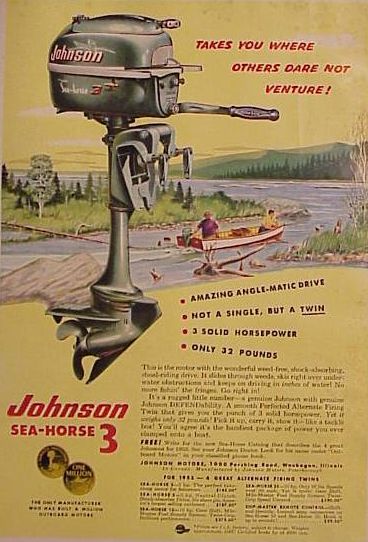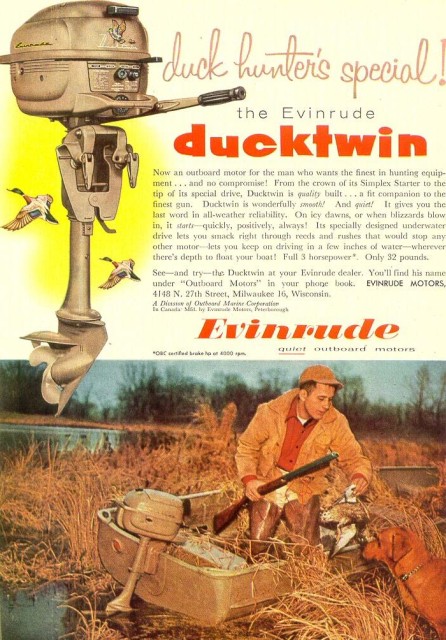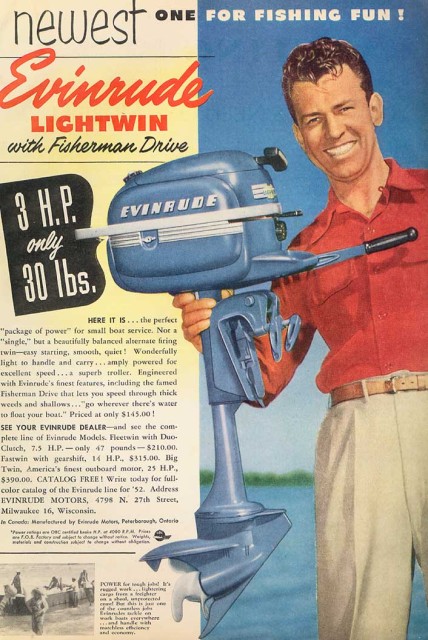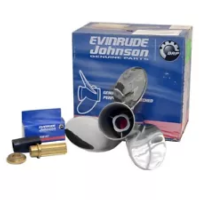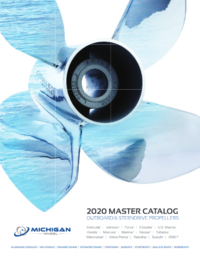History:
Evinrude 3 HP Lightwin was made from 1952 through 1967. Also available from Johnson.
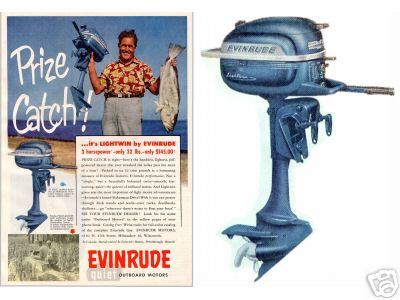
These were marketed as carry-along fishing boat motors. OMC sold tens of thousands of these in the post-WWII era in a time when people had more leisure time to enjoy the great outdoors. One big appeal was the motors were lightweight compared to the older models. As with all Johnson/Evinrude motors, this was cutting edge technology at the time it was introduced in 1952. This is a very simple motor designed to be dependable and easy to work on. When you take it apart, you will find that there is not much there except for basic components: simple powerhead, magneto ignition, carburetor, and water pump. One thing that I love about this motor is that it is all metal and no plastic. This is the same basic twin cylinder two-cycle design used on many Johnson/Evinrude motors through the years and even with recent motors. There are no gears to shift. If you want to go in reverse, you simply turn the motor around backward. I've heard these called "dock busters" because they have no neutral. When you pull the rope to start, the propeller is spinning. I never thought about this as a problem or wanted a shifter when I first learned to run this motor as a young boy. This motor weighs 32 pounds without the 2/3 gallon of gas contained in the gravity fed tank on the top. This motor is just right for the 16' flat bottom john boat we fished with, and it would push us along at a comfortable speed. Anything larger would have been too much power to be safe on such a little boat and too much hassle messing with a remote tank when all you wanted to do was fish. Motors with remote tanks make sense if you have your boat on a trailer and you do not have to completely unload the boat each trip. Our small boat was transported upside down on top of the car. Messing with a more complex motor would just take longer to load the boat and get started fishing. You can run a long time before draining the tank out of gas. You do have to be careful because there is no indication for fuel level other than looking in the tank. You want to make sure the fuel vent is open when you are running the motor. Otherwise, it will quit on you after a while. You also want to make sure the vent is closed then you transport the motor, so you don't have a mess with mixed oil and gas smelling up your car. I remember that we use to shut off the fuel on the side of the motor and still be able to go a couple of hundred yards before running the engine dry. We liked to get the gas out of the carburetor before transporting or storing the motor. This motor was unique because of the angle of the propeller shaft. I've been told that this is so you can tilt the motor up and run in very shallow water. I've also been told that this was a great feature for a canoe motor because it would help keep the bow from sticking straight up into the air. The prop arrangement was also supposed to be weedless. In 1967, the last year for this motor, Evinrude introduced a folding lightwin. The folding lightwin has a case that you could keep it in after you fold the lower unit. It turned out that this was not such a good idea because the bracket that allowed the lower unit to fold would crack from stress. Don't buy a folding lightwin because it was not a good design feature. The regular lightwin motors are great and once tuned-up, are probably better that the 3 hp motors you can buy today.
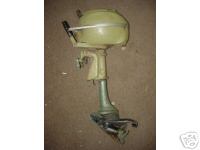 |
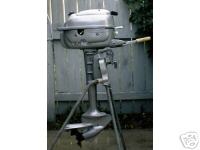 |
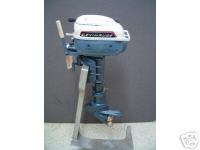 |
